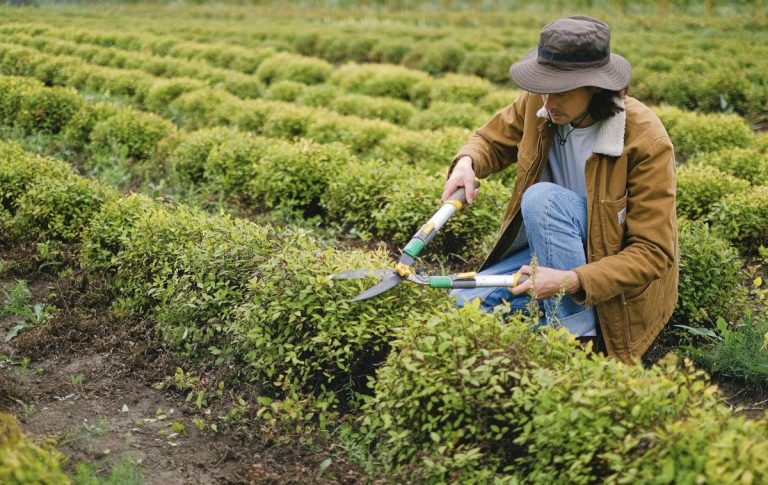A beautiful garden is often the pride and joy of any homeowner. It’s a place where you can relax, entertain guests, and enjoy the beauty of nature all at once. However, maintaining a garden requires time, effort, and knowledge in order to keep it healthy and thriving. In this ultimate guide, we will provide you with essential tips and techniques for proper garden maintenance.
From pruning and watering to pest control and soil management, we will cover all aspects of gardening to help you achieve your dream outdoor oasis. Whether you are an experienced gardener or just starting out, this comprehensive guide will equip you with the necessary skills to maintain a flourishing garden throughout the year. Let’s get started.
Plan and Design Your Garden
The first step to maintaining a beautiful garden is proper planning and design. Before you start planting, it’s important to have a clear vision of what you want your garden to look like. Consider factors such as the size of your garden, the type of plants you want to grow, and the overall aesthetic you’re aiming for.
Draw out a rough sketch of your garden and plan where each plant will go. Take into account factors like sunlight exposure, water requirements, and compatibility between different plant species. This will not only make your garden visually appealing but also ensure that your plants have the best chance of thriving.
Find the Right Tools and Equipment
Having the right tools and equipment is essential for proper garden maintenance. Invest in quality gardening tools such as shovels, rakes, pruners, and watering cans to make your tasks easier and more efficient.
Consider the specific needs of your garden when choosing tools and equipment. For instance, worx electric chainsaw will be more suitable for a larger garden with lots of trees, as it can help with pruning and cutting branches. On the other hand, a small hand trowel will suffice for a smaller garden with potted plants.
Regularly clean and maintain your tools to ensure their longevity and effectiveness. This will save you time and money in the long run.
Prepare the Soil
Healthy soil is the foundation of a thriving garden. Before planting, it’s important to prepare your soil by removing any weeds, rocks or debris. Then, enrich the soil with organic matter such as compost or manure to provide essential nutrients for your plants.
It’s also important to test the pH level of your soil using a simple home testing kit. Different plants require different levels of acidity or alkalinity in the soil, so it’s important to adjust accordingly. This will help ensure that your plants can absorb nutrients effectively.
Regularly adding mulch to the soil can also help retain moisture and suppress weeds. Lastly, aerate the soil periodically by loosening it with a rake or tiller to improve air circulation and drainage.
Water Regularly and Properly
Proper watering is crucial for maintaining a healthy garden. Different plants have different water requirements, so it’s important to research and understand the needs of each plant in your garden.
In general, most plants require about 1 inch of water per week. However, this may vary depending on factors such as climate, soil type, and plant type. Water deeply and less frequently rather than shallowly and often to encourage roots to grow deeper into the soil.
Water early in the morning or late in the evening when temperatures are cooler to reduce evaporation. Also, consider using drip irrigation or soaker hoses instead of overhead sprinklers to minimize water waste.
Keep an Eye on Pests and Diseases
Pests and diseases can quickly damage or even kill your plants if left unchecked. Regularly inspect your garden for any signs of pests or diseases, such as holes in leaves, discoloration, or wilting.
Preventative measures such as companion planting, using natural pest repellents like neem oil, and maintaining proper spacing between plants can help minimize the risk of infestations. If you do notice a pest or disease problem, act quickly to address it. This may involve removing affected plants, using organic pesticides, or seeking professional help if necessary.
Perform Regular Maintenance Tasks
Regular maintenance tasks are essential for keeping your garden healthy and beautiful. These may include pruning dead or damaged branches, removing weeds, and fertilizing plants.
Pruning not only improves the appearance of your garden but also promotes healthy growth by removing diseased or overcrowded branches. Weeding prevents competition for nutrients and space among plants. Fertilizing provides essential nutrients that may be lacking in the soil.
Performing these tasks regularly helps prevent larger problems from arising in your garden. Set a schedule for maintenance tasks to ensure they are done consistently throughout the year.
Proper garden maintenance is essential for keeping your outdoor space healthy and beautiful. By following these tips and techniques, you can create a thriving garden that will bring joy and relaxation to your life. Remember to plan and design your garden carefully, have the right tools and equipment, prepare the soil, and water regularly, monitor for pests and diseases, and perform regular maintenance tasks to keep your garden in top shape. With dedication and patience, you can achieve the garden of your dreams.

0 Comments